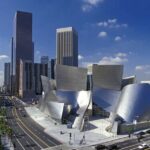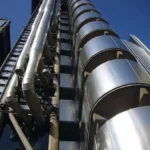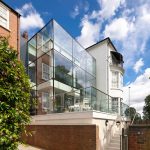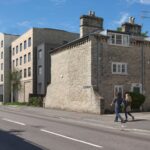Bristol Beacon Concert Hall and Music Hub, Southwest England building, Architecture images
Bristol Beacon Concert Hall and Music Hub in England
24 January 2024
Architecture: Levitt Bernstein
Location: Bristol, England
Photos © Tim Crocker
Bristol Beacon Concert Hall and Music Hub, UK
• Levitt Bernstein’s reimagination and restoration of Bristol Beacon sees this Grade II listed concert hall transformed.
• The venue can now compete on a world stage with exemplary standards of acoustics and improved accessibility.
• The work includes an entirely new interior for the main hall, restored second hall, and a new cellar venue, together with renovated historic public spaces and new music studios.
Architecture studio Levitt Bernstein has completed the highly-anticipated reimagining of Bristol Beacon for Bristol City Council and Bristol Music Trust. This transformational project has created a centre of excellence for music of all kinds, where it can be created, performed, recorded and broadcast, all under one roof.
This completion follows Levitt Bernstein’s new foyer building in 2009 – and it is the second and final phase of a project that promotes Bristol Beacon as an exemplar of international quality within the music industry. Levitt Bernstein has repaired, restored and upgraded the original fabric of the Grade II listed building, conserving the distinctive Victorian architecture while reimagining its future. The architectural works celebrate the highly significant Bristol Byzantine style of the original building whilst adapting it for today’s audiences and modern venue operation.
The project’s programmatic needs were extensive, including: the renewal of existing music performance halls and backstage areas; the remodelling of secondary spaces, such as the underused cellars, to introduce new music education studios and club-style third venue; and the insertion of new AV, stage engineering and upgraded building services. Additionally, a new restaurant has been incorporated within the historic colonnade, complementing the venues with a characterful dining space for visitors and audiences to enjoy.
Mark Lewis, Associate Director at Levitt Bernstein, said: “From the outset, it was important that this project was about more than a concert hall. It is a resource for the people of Bristol and, with the support of the Council and the Music Trust, our work means this venue can bring classical and contemporary culture and innovation to the city.
“We have been careful to retain the historic character of the building, working sensitively within the constraints of the exiting fabric, to create a space which is both respectful to its heritage and environmentally sustainable, while bringing the halls within up to standards that can compete with venues on an international stage. This transformation will mean that Bristol Beacon can continue to be enjoyed, loved and, most importantly, well-used by everyone, for generations to come.”
Bristol Beacon encompasses three main performance halls. Beacon Hall – a professional concert hall with capacity for around 1,800 (2,200 with stalls standing) – is a first-class, industry-leading facility. Designed as a contemporary intervention, Levitt Bernstein has built a new flexible and adaptable interior within the 1867 original masonry walls. New timber-lined balconies, shaped to optimise room acoustics, with trifurcating steel columns to support the upper balconies and technical decks deliver a unique and dramatic visual signature that combines heritage with world-leading acoustics and 21st century technology.
The new interior has been nested into the building’s Victorian shell. Taking cues from the original pilasters and arched window openings, the design references the visual memory of the historic architecture within the new interior. The adaptability of the new interior, through variable acoustics, removable seating and access for lighting, makes it one of the most flexible and accessible concert halls in the country.
The second, or Lantern Hall, has been much altered during the building’s history, having been converted to a theatre, bar, and ad hoc second venue since 2009. Levitt Bernstein has completed external restoration works that reinstate the original architectural composition of the Colston Street façade by removing later additions, reopening the colonnade to its original width of seven bays and reopening the windows to the Lantern Hall. At ground level, the former box-office space is now better purposed as a public restaurant and cocktail bar which creates an activated ‘shop front’ with a new screen of frameless glazing positioned behind the stone columns. The full size of the original daylit atrium has been reinstated and features a new modern staircase contrasting with the Victorian architecture. The Lantern Hall sits alongside this space and is now a high quality second performance venue for all kinds of music. With a smaller capacity of around 300 to 500 (standing), this space is designed for more intimate concerts, new work, spoken word and other events.
The atmospheric former bonded cellars beneath Beacon Hall have been carefully converted into a suite of creative spaces for music education, practice rooms, library, recording studio, digital music lab and a new cellar venue for smaller, more intimate concerts and emerging artists. This third hall is an additional performance space or cabaret-style club venue for 100-250 people that can also be used for rehearsal, education or break-out space.
Public art curator Field Arts Projects worked closely with Levitt Bernstein to ensure Bristol Beacon is rejuvenated with artists’ voices at its heart. Linda Brothwell, Libita Sibungu, Rana Begum and Giles Round have each created a bespoke work to enhance the look and feel of the venue, adding to the richness of the transformation and the experience for visitors. Their work includes a response to the building’s relationship with the water that surrounds and flows through the city; the textiles and fabrics within the new performance spaces; an architectural installation within the new Lantern space; and a contemporary intervention on the façade of the Lantern building.
Two larger interventions and artworks, produced and curated by Bristol artist Cathy Mager, celebrate the rich social history and heritage of the Beacon building. Working with artist Mel Northover, the Story Wall created a beautifully intricate, illustrated narrative of the building’s history from its opening in 1867 to the present day, celebrating the unsung heroes and hidden stories of the venue’s past. For the new cellar space, neurodivergent artist Frankie Boyle has created Convergence; an undulating sculpture of ash wood ribs that resemble a warped keyframe inside a piano. This artwork is a homage to the music creation and innovation that has taken place in the building for over 150 years.
With a focus on acoustic excellence, sustainability and heritage, Bristol Beacon required a bold and imaginative strategy to ensure it would excel in use. The Beacon Hall offers near-perfect acoustical conditions for the enjoyment of both amplified and non-amplified sound for audiences and musicians. Flexibility is designed into the acoustic strategy for high sound quality, by adapting for different uses and allowing all genres of music to be performed in optimal conditions. Additionally, the transformation has delivered a reduction in sound transmission between halls and practically removed intrusion from external noise, enabling complete ’pin-drop’ silence. To achieve this, Levitt Bernstein collaborated with world renowned acousticians Sound Space Vision to implement a creative design that delivers excellent acoustic conditions in each space.
Louise Mitchell CBE, Chief Executive of Bristol Beacon, said: “It’s been wonderful to watch the plans for Bristol Beacon’s historic concert building come to life and connect with the much-loved Bridgehouse foyer building completed in 2009. Bristol now enjoys an unrivalled combination of inspiring spaces for music together with inclusive, welcoming and beautiful public areas. I am delighted with every element of the new facilities, designed with a true understanding of our needs and built to inspire generations of Bristolians.”
Levitt Bernstein prepared a masterplan for this phased project in 2001 and previously completed Phase One in 2009 with the addition of a striking new foyer building, recently renamed Bridgehouse. An icon in its own right, this building centres around an informal open performance space and provides access by lifts, stairs and bridges to the auditoria. It includes a café, interval bars, public facilities and a number of flexible spaces that support the venue’s education, outreach and conference programmes.
Bristol Beacon Concert Hall and Music Hub in Southwest England – Building Information
Client: Bristol City Council for Bristol Music Trust
Design: Architect: Levitt Bernstein – https://www.levittbernstein.co.uk/
Interior designer: Levitt Bernstein
Project manager: Mace / Arcadis
QS: AECOM
Main contractor: Wilmott Dixon
Acoustician: Sound Space Vision
Theatre consultant: Charcoalblue
Structural engineer: ARUP
M&E: ARUP
About Levitt Bernstein
Great buildings for music play a key role in fostering sustainable communities and become meaningful touchstones in a city’s cultural infrastructure. We believe good design is people-centred, unintimidating and enjoyable to engage visitors and help attract a wider, more diverse audience.
Levitt Bernstein’s architects, urban designers and landscape architects work from design studios in London and Manchester. We believe that good design transforms lives and apply this principle to our housing, education, health, arts and commercial projects of all shapes and sizes across the country.
Our vast experience in the design of arts and cultural buildings, from museums and galleries to theatres and concert halls, has been recognised by numerous awards.
As well as designing new buildings, we are well versed in the sensitive restoration and refurbishment of listed buildings for arts use. We have significant expertise of working in heritage contexts and always strike a balance between respecting architectural heritage and creating sustainable and accessible places.
Images © Tim Crocker
Bristol Beacon Concert Hall and Music Hub in Southwest England information / images received 240124
Location: Bristol, England
Location: Bristol, south west England, UK
Bristol Architecture
Bristol Architecture Design – chronological list
Welcome Building
Design: Hassell
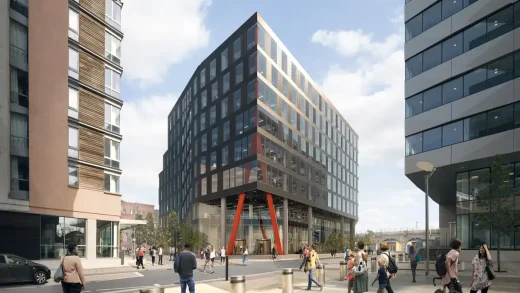
image courtesy of architects practice
Welcome Building Bristol workspace design
Architects: BuckleyGrayYeoman
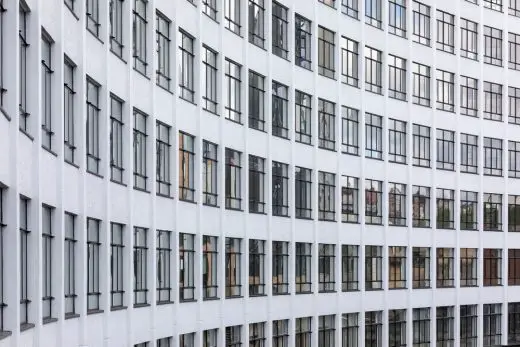
photo © Peter Landers
Chocolate Factory Mixed-Use Building in Bristol Building
Bristol Buildings – Selection
Arnolfini Icon
Design: 51N4E
Bristol Icon
Bristol Metropolitan College
Design: Wilkinson Eyre Architects
Bristol Metropolitan College
Comments / photos for the Bristol Beacon Concert Hall and Music Hub Architecture page welcome

